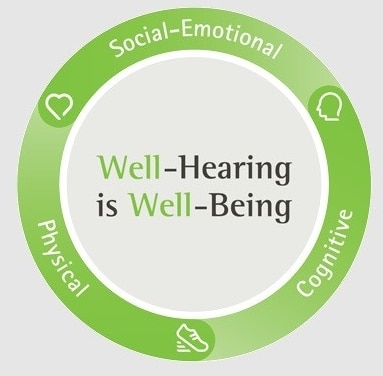Phonak Well-Hearing is Well-Being™

Well-being is a very personal, and multidimensional concept. While hearing loss and communication challenges can impact the core dimensions of well-being, growing evidence shows that hearing rehabilitation can provide benefits in the same three domains.1










